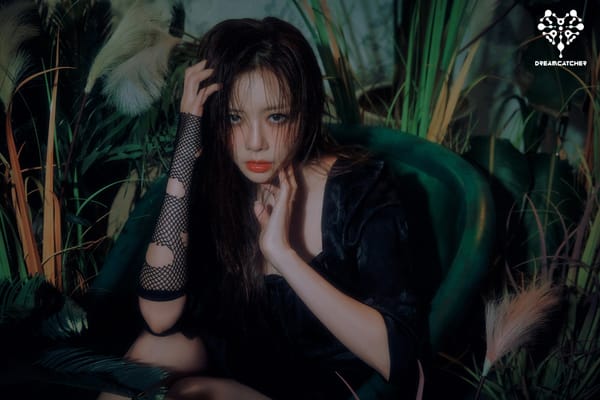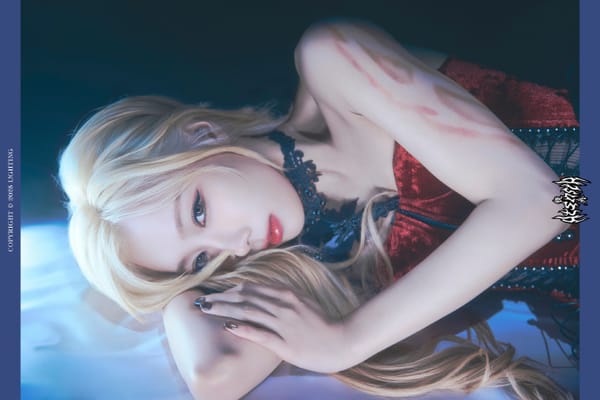Retrospective: Dreamcatcher’s First Tour Since 2019 Shows Growth In More Ways Than One
K-Pop — Dreamcatcher Retrospectives
Dreamcatcher’s first leg of the Apocalypse: Save Us World Tour in 2022 was filled with moments and numbers that validated how far the group has come in almost three years.
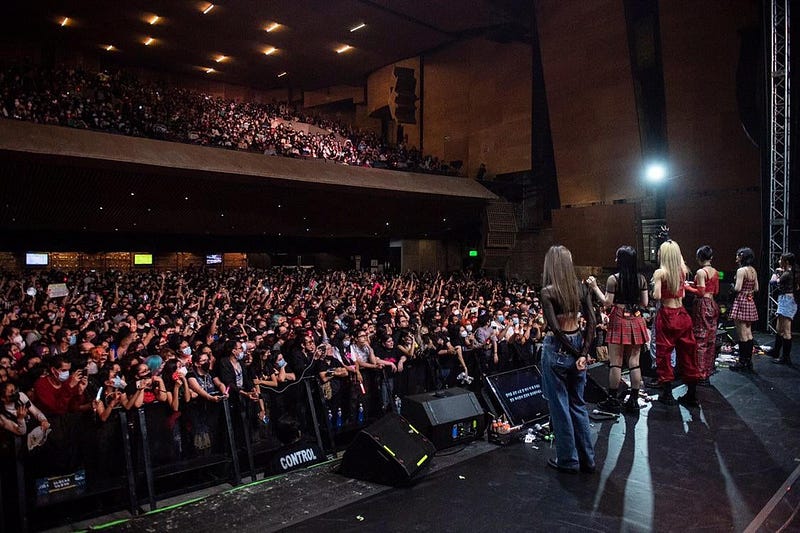
It’s the end of the month of July in 2022, and Dreamcatcher has put a wrap on a tour that took them all over the US and briefly into Mexico. With this, plus their first appearance at an anime con in Houston’s Anime Matsuri (which despite some logistical issues at the event and Main Rapper Dami being unable to attend due to COVID-19 appeared to go well) Dreamcatcher has completed a whirlwind of travel that not only was their first time back on the touring road since pre-pandemic late 2019, but also showed just how much they’d missed performing in front of fans.
More importantly, however, it showed off the group’s growth in three years, both from a fan and an artist perspective, and that in both respects, it has been significant. Even if I hadn’t had the opportunity to attend one of their stops myself (as I did in 2019), I would still come to this conclusion — in part because it was undeniable given the numbers, but also because it rewarded a group and company that had intelligently invested funds and time suddenly slashed due to a pandemic out of their control. Unlike other K-Pop groups out there, Dreamcatcher has been built to tour from the beginning and losing that pillar for almost three years may have crippled or even ended another group. But as the 2022 summer tour proved, Dreamcatcher had little to worry about. Armed with two full albums and a bevy of new music they hadn’t had a chance to perform as much inn front of live audiences, the group proved their worth on the global K-pop stage.
Here’s a few thoughts I have from Dreamcatcher’s recent 2022 summer tour, and what it’s meant for the group.
Dreamcatcher came armed with an exponentially larger discography that contained songs that seemed to be made for tour performances.
[embed]https://www.youtube.com/watch?v=ke7sNtsA00o[/embed]
The last time that Dreamcatcher was on tour in 2019, they dropped in a setlist filled with pretty much all their title tracks, and a few B-sides. To add flavor and to help fill up a two hour set, the group included subunit stages and covers, such as 2019’s “TT” (originally by TWICE) and “Bad Boy” (originally from Red Velvet) performances. While these were entertaining in their own way, it would have been nice for Dreamcatcher to have a setlist that had enough variety to pick from.
[embed]https://www.youtube.com/watch?v=Zt3BuBX28ZY[/embed]
Three years, two full albums, and three mini albums later, Dreamcatcher no longer has this problem. While it’s expected that such a long layoff between tours would inevitably give the group much more freedom to pick and choose from a much-expanded discography, I think it’s worth noting that many of the songs chosen honestly felt like they were made with performing live and on tour in mind. Sure, title tracks like have the electronic rock-heavy, simple-to-sing-along-to chorus like “MAISON” fit this bill, but other songs on the B-side front, like the all-English “Can’t Get You Out Of My Mind”, hard rocker “Break The Wall”, and the upbeat, encouraging, and seemingly made-for-tour-encores “New Days” also found their place into the set.
[embed]https://www.youtube.com/watch?v=SK_9Yd6bKew[/embed]
The result was, at times, a headbanging, rocking, and cheering crowd, and in the case of Mexico City, many times when songs were sung by fans right along with Dreamcatcher. You could tell that the group loved these kinds of responses to their music, and much of that is based on a thoughtful musical philosophy from long-time producers LEEZ and Ollounder (as well as from the members themselves) that their songs take on amazing life and engage the crowd when sung live. That points to a great deal of foresight, and it was rewarded in spades on this most recent tour.
Dreamcatcher showed off a more confident, dynamic stage presence through lots of improvisation, as well as engagement with their audience.
[embed]https://www.youtube.com/watch?v=cuq6QlRCkxE[/embed]
While Dreamcatcher has always had a great stage presence, good artists know that they can always improve upon already-existing skillsets. In an improvement from 2019, Dreamcatcher seemed to exude much more of it in performing in front of fanas. This is where songs that didn’t have choreography (like the english version of 2020's “Tension”) were nice, because they gave the group opportunities to sing and also to walk around and engage with each other and with the audience. Whether it was in small and short interactions with each other that fans went wild over, in how they always managed to spread out and give all parts of the audience some acknowledgment and smiles, or in asking them to sing along with them for certain easy-to-follow parts, Dreamcatcher seemed much improved in not making the concert experience for fans just a passive watching experience.
[embed]https://www.youtube.com/watch?v=VgRt-G5ljwU[/embed]
The neat thing about musical artists who know how to work a crowd is that the energy is infectious, and soon spreads like wildfire, making a performance all the more engaging and fun. I’m normally a pretty calm audience member, but there were times when even I was caught up in the rush of a really cool song or the fact that group members saw and waved to our section (or even to me specifically as I did my limited filming and picture-taking). And of course, since artists temporarily grabbing fans’ phones has become a thing in K-Pop, there are potential memories to made in the process.
Dreamcatcher’s Solo Medley segment went down as one of the most fun and engaging ment segments from the tour.
[embed]https://www.youtube.com/watch?v=ofxnLLTyv40[/embed]
Speaking of memories, ments from K-Pop concerts (intended to both give the artists a break from intense choreography/performances and audiences a chance to see the members’ have fun in a more casual setting), have always had the highest potential to create them, mostly because they almost always involve audience engagement and plenty of group member personality. In 2019, the segment most memorable was the 7 Rings choreography contest, in which different members tried their hand at the subunit point dance. The 2022 tour built on this, with the group’s recent full album release including solo songs allowing the group to each do theirs in turn.
But this wasn’t just a segment where each member took their turn talking about and performing their solo’s point choreography — it also allowed for member interactions and some dynamic audience dialogue that made everything much more entertaining. Dami asked the audience to participate in the chorus of her solo “Beauty Full” as she danced. JiU was seen dancing to “Cherry (Real Miracle)” holding audience-contributed cutouts of the song’s titular, much-loved dog. Yoohyeon often used at least one other fellow member as a moving mic stand, to comedic effect, for her lounge-style song “For”.
[embed]https://www.youtube.com/watch?v=nScNFnuIGmM[/embed]
The interesting part of tours is that artists and producers tend to evolve these fun little ment segments and build on them, adding or editing things (such as having the members throw out small signed ping-pong balls to the audience) to keep it fresh (especially for people keeping up with ever location or attending multiple shows). As such, often a portion of a ment segment ends up being a standout due to how much they “pop” an audience to get a reaction.
[embed]https://www.youtube.com/watch?v=mzTNYCfZoaw[/embed]
The undisputed champion of this during July’s tour was SuA’s “No Dot” section of the solo medley ment, where SuA would first dance the aggressive, sultry choreography that the song and concept demanded, then choose other members to do the same. The result was a bunch of talented, freestyle dance executions on that same concept, and everyone had fun with it, from the members who were most certainly turning the concept up to eleven on purpose for comedic and fanservice effect, to the audience, who didn’t know who would be chosen or what they might do with “No Dot”. It was also fun to see the evolution of this part of the segment, from individual members, to subunits of 2 or 3 doing it all at once, to finally in Mexico City (the last stop) getting a “No Dot” version with all 7 members at once. It was pure entertainment and such dynamic segments are the core of many a K-pop concert, formulating plenty of great moments fans end up watching over and over.
By the numbers, Dreamcatcher’s fandom and exposure internationally has grown, leading to confidence that the group is sustainable for the foreseeable future.
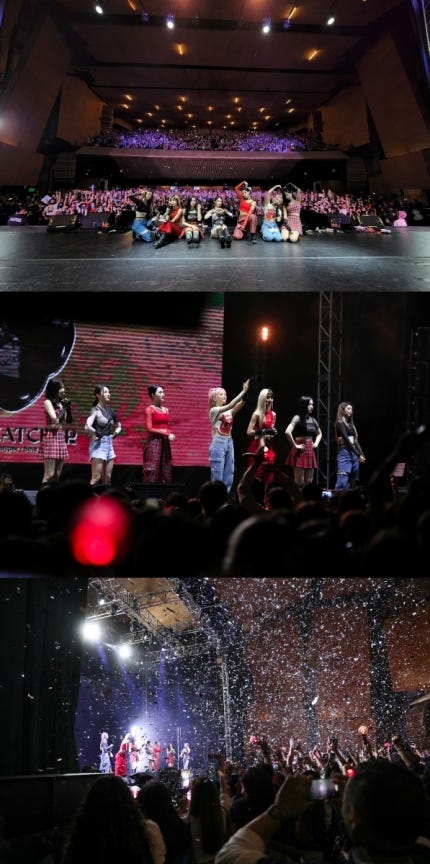
In 2019, during the group’s last tour, Dreamcatcher played to five cities in the US, with an average venue capacity of 1,000–2,000. This time around the number of stops doubled, counting Houston’s Anime Matsuri stop, with much higher capacity caps of between 2,000–4,400.
When considering where and how often to appear on a tour, you have to think about whether or not you would reliably sell out a venue, as underselling it is extremely bad and ends up costing, instead of profiting, the group. And while album sales have appreciably increased since the group’s 2019 US tour, there’s always a certain degree of uncertainty about whether or not you can fill venues depending on a variety of factors.
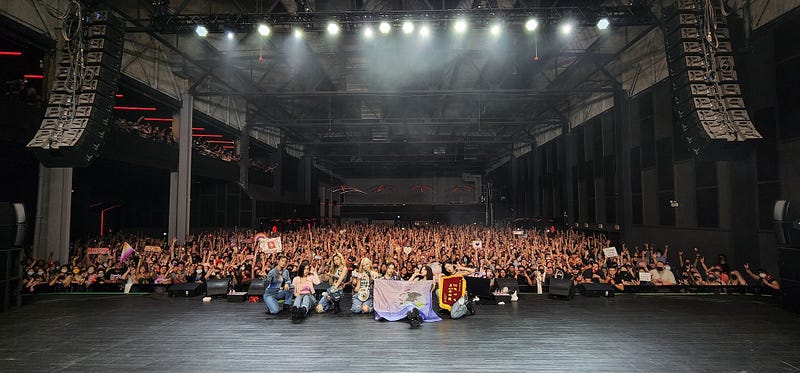
Thankfully, the answer to whether or not Dreamcatcher could reliably sell the venues it booked for this past July’s tour is a resounding yes. Various unofficial accounts place the amount of total sales anywhere between high 80s — to low 90 percent of total capacity for all the stops. Los Angeles added an additional show and Mexico City opened up another section for sales due to immense demand. Fans sat in long lines, crowded into venues, and even camped out the night before to be able to see the group. Dami was quoted during the tour as being pleasantly surprised to see many more Somnias wanting to see Dreamcatcher, and it was, hopefully, a validation that they are doing something right in their K-Pop careers.
Dreamcatcher clearly missed, enjoyed, and loved performing for their fans after a long period of not being able to do so.
[embed]https://www.youtube.com/watch?v=mmGldhHxRKA[/embed]
Debates come up every so often about the parasocial nature of K-Pop, and whether or not what we see from groups and artists is their genuine selves. My opinion on this is that by nature the industry is obligated to present something meant to increase appeal, entertainment, and ultimately, sales. Many public-facing celebrities face a duality of public/private personas all the time, and having a public image, if it contains an element of parasocial behavior, is just more prominent in K-Pop.
But call me an optimist, I do think for the most part, K-Pop artists get into the industry at least in small part because they genuinely love what they are doing, including interactions with fans. Parasocial or not, many musical entertainers are in it because they see that joy and respect that is in their audience’s eyes when they perform and do so well. In K-Pop, where long years and long hours are a part of many paths, I feel that that is motivation for many artists.
[embed]https://www.youtube.com/watch?v=YYZb8DroYKw[/embed]
Dreamcatcher has always struck me as truly genuine when it comes to how they feel about their fans. While we do only see what is presented to us publicly, my long time following them over the past five years along with that constant exposure tells me from what I’ve seen that they care quite a bit. Being from a smaller company that has had to be scrappy to be sustainable helps, but I also think that for a group built to tour, you have to have a desire to connect to your fans from a live stage to the audience. You have to truly love what you’re doing when touring — the travel, the potential jet lag, the being away from home, any of the problems that inevitably occur on tour — to be able to get through it.
At the end of every show, from New York to Mexico City, Dreamcatcher seemed happy, but also sad to go. Seeing the results of what they’ve worked hard to achieve over the past 3 years or so is a heady, yet emotional moment. It remains to be seen how many more tours we’ll get out of Dreamcatcher in the lifecycle of their careers, but it’s clear that they, like us, cherish almost every moment of them.


